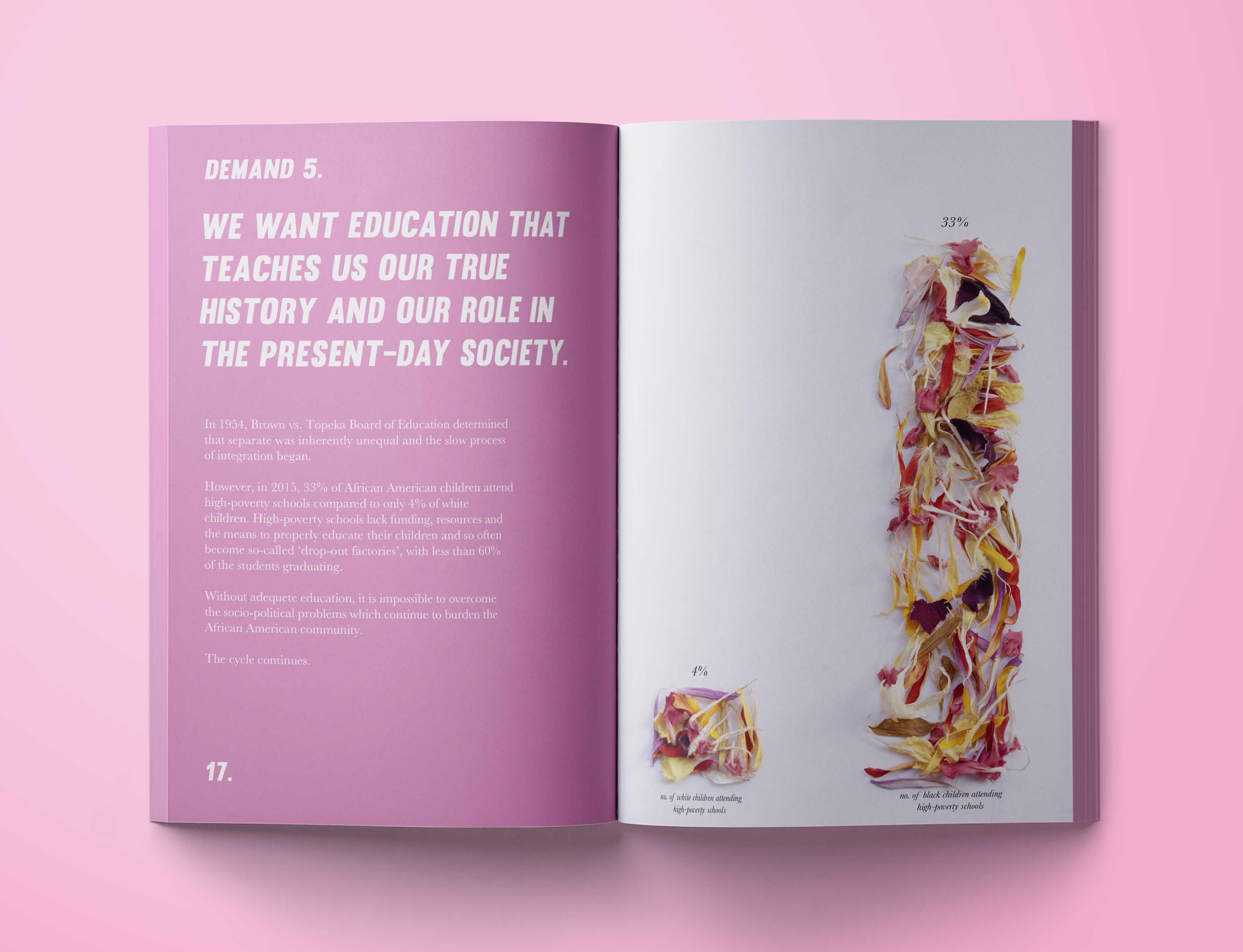Who Killed
Martin's Dream?
why is martin luther king, jr.'s dream still a dream?
| project type | skills used | key words |
| d&ad brief | Writing / Photography / Typography / Book Design | Anti-Racism / America / Politics |
| where are we today? | one |
|---|---|
| Systemic and institutionalised racism persists because the people with the power to change it either don’t care enough to change or care very much about those systems staying in place. This campaign seeks to educate its audience about the very real effects of racism in society — to make people feel uncomfortable in continuing their pattern of apathy when aware of racial injustices. | |
| where are we today? | two |
|---|---|
| The campaign uses the phrase ‘Who Killed Martin's Dream?' (referencing Martin Luther King, Jr.'s I Have a Dream speech) as an urgent and pressing slogan to emphasise how the dreams of the civil rights era have been lost to a system which still oppresses people of colour. | |
How are you
helping to dismantle racism today?
| the ten-point programme | one |
|---|---|
| With education at the heart of the campaign, finding new ways of understanding complex data and socio-economic politics was crucial. A short book explores the current position of Black Americans through the lens of the original ten-point programme of the Black Panther Party, first published in the 1960s. | |
| the ten-point programme | two |
|---|---|
| In which ways have these demands for human rights been fulfilled? In which ways have civil rights processes remained stagnant or even reverted since the mid-century? Spoiler: not a huge amount has changed — in fact, not one of the original ten demands have been fulfilled. With economic inequality deeply entrenched in American society, racial equality is still desperately far away. | |
